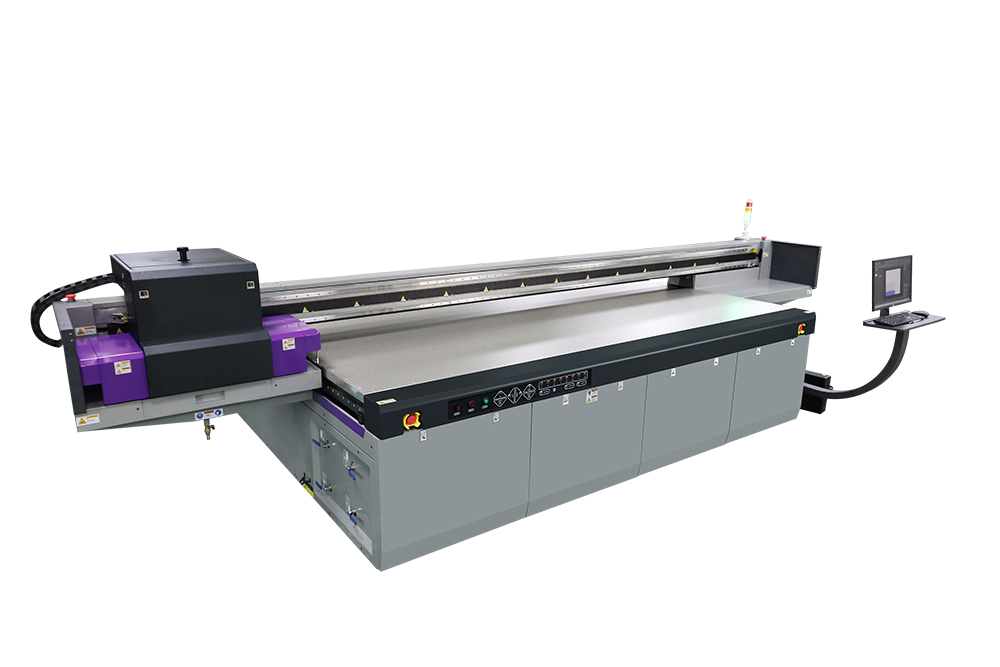What Is the Difference Between UV and Latex Printers?
What Is the Difference Between UV and Latex Printers?
In the realm of digital printing, two technologies have emerged as formidable contenders, each offering unique advantages and catering to specific needs: UV printers and latex printers. Both technologies have revolutionized the printing industry, enabling high-quality outputs with remarkable efficiency. However, they differ significantly in terms of the printing process, ink composition, applications, and environmental impact. This article delves into the intricacies of UV and latex printers, highlighting their distinct features and use cases.

Understanding UV Printers
UV printers, short for ultraviolet printers, utilize UV-curable inks that instantly dry when exposed to ultraviolet light. This technology allows for rapid curing of ink on various substrates, making it ideal for printing on materials such as glass, plastic, metal, wood, and even flexible materials like vinyl. The ink is jetted onto the surface and immediately cured by UV lamps, resulting in vibrant, durable prints that are resistant to fading, scratching, and water damage.
One of the key advantages of UV printers is their ability to produce high-resolution prints with precise detail. The instant curing process enables precise dot control, allowing for intricate designs and sharp images. Additionally, UV printers can accommodate a wide color gamut, reproducing colors accurately and vividly. This makes them particularly suitable for applications requiring high visual impact, such as advertising displays, vehicle wraps, and interior decorations.
UV printers also excel in terms of productivity. The instant drying capability eliminates the need for long drying times, enabling faster turnaround and increased throughput. This efficiency is crucial for businesses operating in fast-paced environments where time is of the essence.
However, UV printers do have some drawbacks. The primary concern is the environmental impact of UV inks, which may contain volatile organic compounds (VOCs) that can be harmful if not properly managed. Special ventilation systems are often required to ensure workplace safety and comply with environmental regulations. Furthermore, UV printers tend to have a higher initial investment cost compared to some other printing technologies, including latex printers.
Exploring Latex Printers
Latex printers, on the other hand, employ water-based latex inks that are cured through a heating process. These inks are known for their eco-friendliness, as they are VOC-free and emit minimal odor during printing. Latex inks adhere well to a variety of surfaces, including paper, canvas, textiles, and even certain types of plastics, making them versatile for a wide range of applications.
One of the standout features of latex printers is their ability to produce prints with excellent color saturation and density. The inks offer a broad color spectrum, allowing for vivid and lifelike reproductions. This quality makes latex printers particularly appealing for fine art reproduction, photography prints, and high-end interior decor applications.
Another advantage of latex printers is their environmental credentials. As mentioned, latex inks are water-based and VOC-free, reducing the ecological footprint of the printing process. This makes them a preferred choice for environmentally conscious businesses and those seeking to comply with strict environmental standards.
Latex printers also offer good print durability. The inks, once heated and cured, create a flexible and resilient film that resists cracking, fading, and water damage. This durability makes latex prints suitable for both indoor and outdoor applications, including signage, wall coverings, and exhibition graphics.
Despite their advantages, latex printers may not be as fast as UV printers when it comes to curing times. The heating process can be slower than UV curing, affecting overall productivity. Additionally, while latex inks offer excellent adhesion to many surfaces, they may not bond as effectively to certain non-porous materials as UV inks do.
Applications and Market Fit
When considering the suitability of UV and latex printers for specific applications, it’s essential to evaluate factors such as print quality, substrate compatibility, environmental considerations, and production speed.
UV printers are often favored for applications requiring high durability and rapid turnaround, such as vehicle wraps, outdoor signage, and point-of-purchase displays. Their ability to print on diverse materials and produce vibrant, long-lasting prints makes them a top choice for these demanding applications.
Latex printers, meanwhile, find their niche in applications where environmental sustainability is a priority, such as fine art reproduction, interior decorations, and textiles. Their eco-friendly inks and ability to produce high-quality prints on a variety of surfaces make them an attractive option for businesses and artists alike.
Conclusion
In conclusion, both UV and latex printers offer unique strengths and cater to different needs within the digital printing landscape. UV printers excel in speed, versatility, and durability, making them ideal for high-volume, fast-paced applications. Latex printers, on the other hand, provide eco-friendliness, excellent color reproduction, and good print durability, making them suitable for applications where environmental considerations and print quality are paramount.
Ultimately, the choice between UV and latex printers depends on the specific requirements of the application, including the desired print quality, substrate compatibility, production speed, and environmental impact. By understanding the distinct features and advantages of each technology, businesses can make informed decisions that align with their unique needs and goals. As the printing industry continues to evolve, both UV and latex printers will remain valuable tools, driving innovation and pushing the boundaries of digital printing capabilities.
